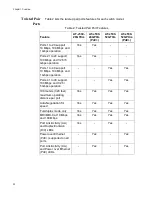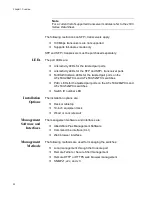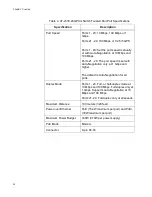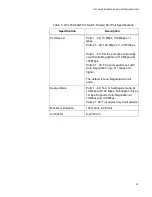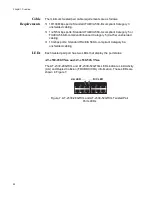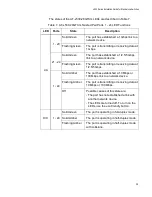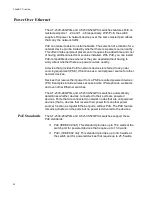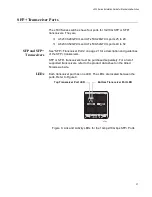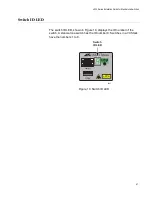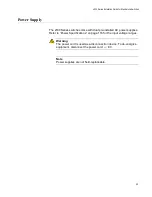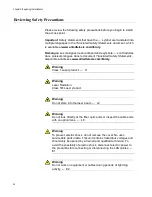
Chapter 1: Overview
34
Power Over Ethernet
The AT-x530-28GPXm and AT-x530-52GPXm switches features PoE on
twisted pair ports 1 - 24 and 1 - 48 respectively. With PoE, the switch
supplies DC power to network devices over the same twisted pair cables
that carry the network traffic.
PoE can make it easier to install networks. The selection of a location for a
network device can be limited by whether there is a power source nearby.
This often limits equipment placement or requires the added time and cost
of having additional electrical sources installed. With PoE, you can install
PoE-compatible devices wherever they are needed without having to
worry about whether there are power sources nearby.
A device that provides PoE to network devices is referred to as
power
sourcing equipment
(PSE). It functions as a central power source for other
network devices.
Devices that receive their power from a PSE are called
powered devices
(PD). Examples include wireless access points, IP telephones, webcams,
and even other Ethernet switches.
The AT-x530-28GPXm and AT-x530-52GPXm switches automatically
determines whether devices connected to their ports are powered
devices. Ports that are connected to network nodes that are not powered
devices (that is, devices that receive their power from another power
source) function as regular Ethernet ports, without PoE. The PoE feature
remains activated on the ports but no power is delivered to the devices.
PoE Standards
The AT-x530-28GPXm and AT-x530-52GPXm switches support these
PoE standards:
PoE (IEEE 802.3af): This standard provides up to 15.4 watts at the
switch port for powered devices that require up to 13.0 watts.
PoE+ (IEEE 802.3at): This standard provides up to 30.0 watts at
the switch port for powered devices that require up to 25.5 watts.
Summary of Contents for AlliedWare Plus AT-x530 Series
Page 10: ...Tables 10...
Page 14: ...Preface 14...
Page 58: ...Chapter 3 Installing the Switch on a Table 58...
Page 90: ...Chapter 6 Powering On the Switch 90...

